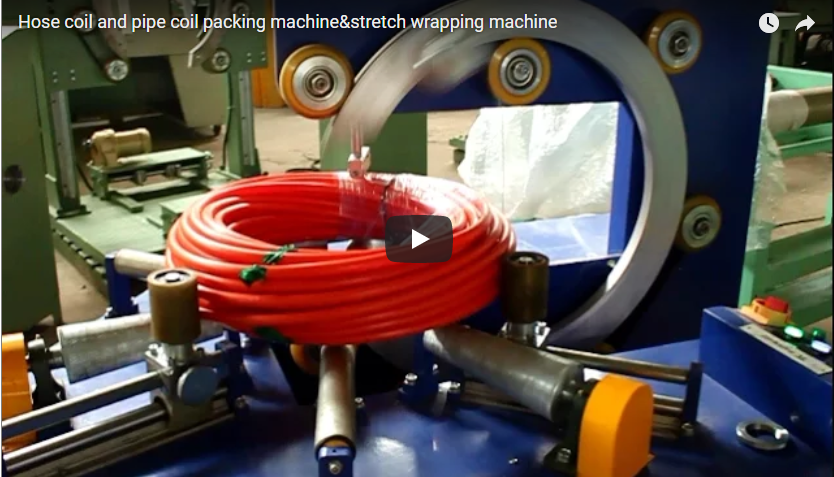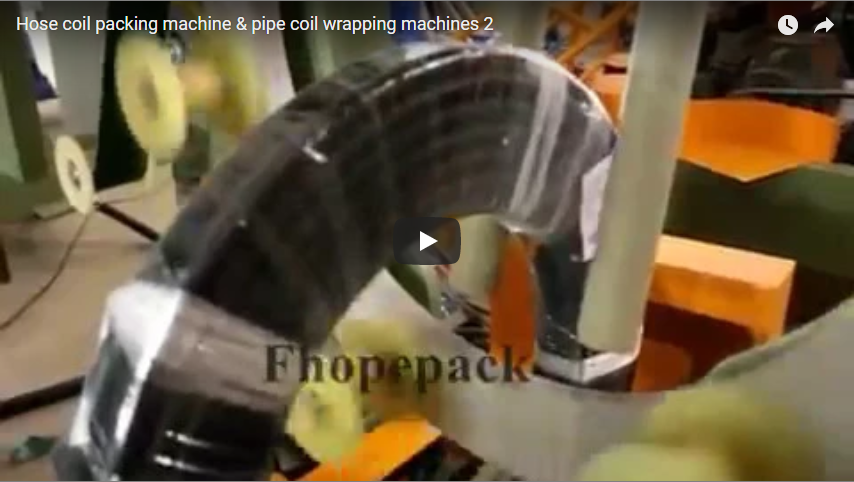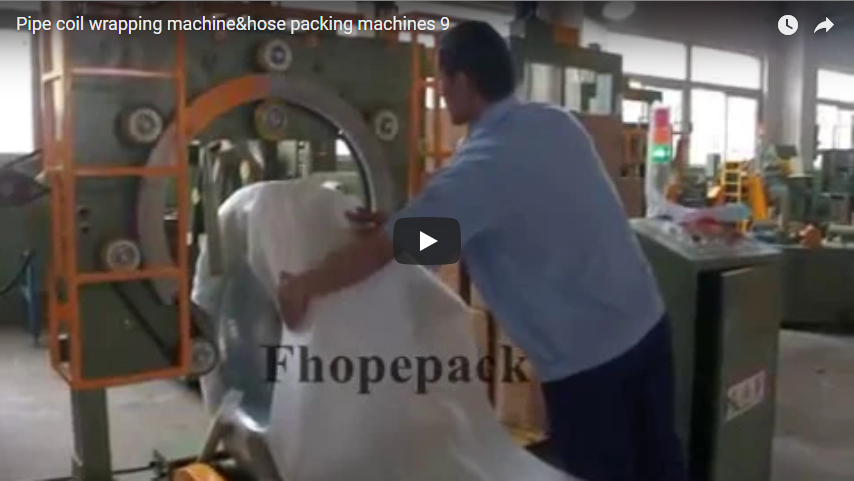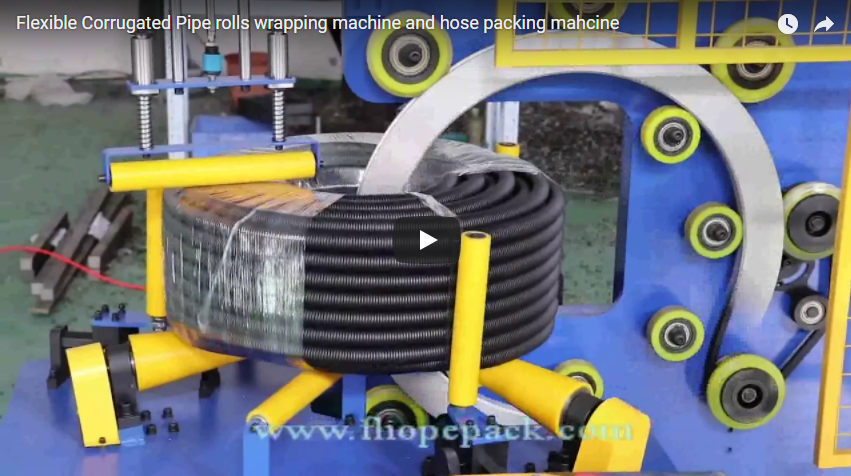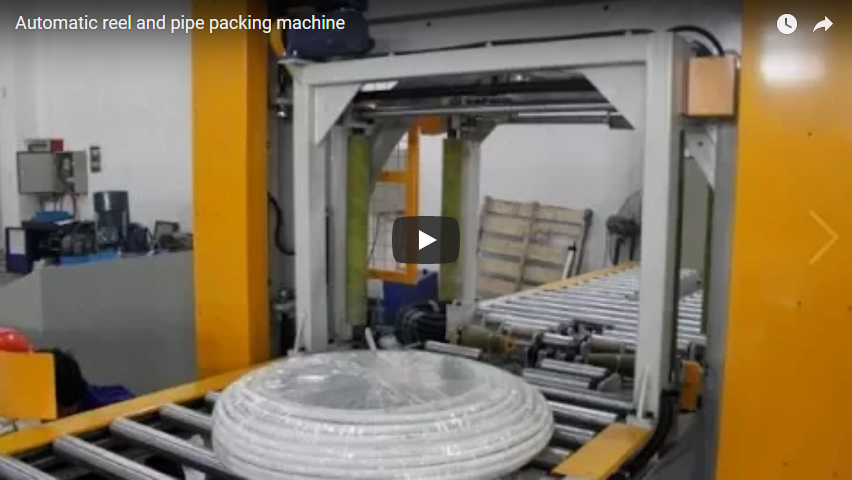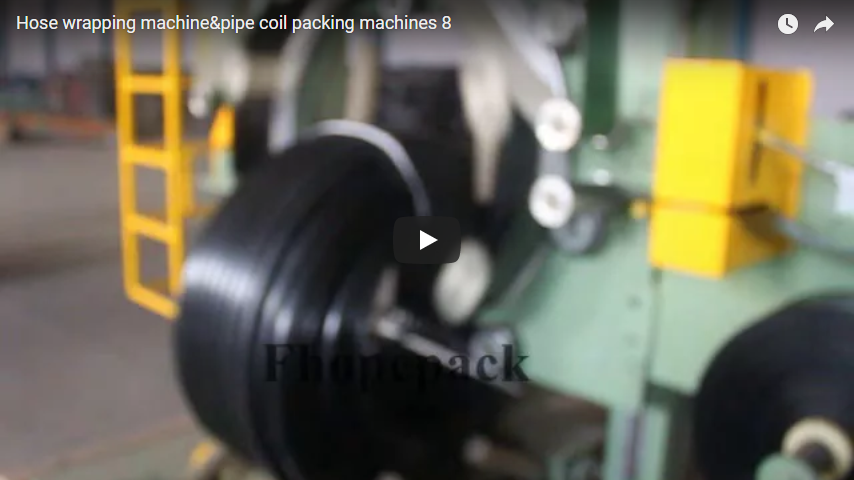Optimizing Coil Packaging: A Technical Look at Hose Stretch Wrapping and Pipe Coil Packing Machines
In modern industrial distribution and manufacturing, efficient and secure packaging is paramount. For businesses dealing with coiled products like industrial hoses, hydraulic hoses, cables, wires, or pipes (such as PEX or corrugated tubing), manual packaging methods are often slow, labor-intensive, and can lead to inconsistent results or product damage during transit. Automated solutions like Hose Stretch Wrapping Machines and Pipe Coil Packing Machines offer a significant upgrade, enhancing throughput, protection, and overall operational efficiency.
Let's delve deeper into the technical aspects and practical benefits of these essential pieces of packaging automation.
1. The Challenge: Manual Coil Packaging Inefficiencies
Before exploring the machinery, it's crucial to understand the pain points they address:
- Labor Costs: Manual wrapping is time-consuming and requires dedicated personnel.
- Inconsistency: Wrap tension and coverage can vary significantly between operators and even between shifts, potentially compromising load stability.
- Product Damage: Improperly secured coils are susceptible to unraveling, abrasion, or impact damage during handling and shipping.
- Material Waste: Manual application often uses more stretch film than necessary.
- Safety Concerns: Repetitive manual wrapping tasks can lead to ergonomic strains.
Automated wrapping systems directly tackle these challenges, providing a quantifiable return on investment.
2. Hose Stretch Wrapping Machines: Precision Protection for Flexible Coils
Designed specifically for the unique characteristics of flexible hoses (rubber, hydraulic, industrial), these machines employ an orbital wrapping process.
- Operational Principle: The hose coil is typically placed onto driven rollers or a specialized conveyor. A ring or shuttle carrying the stretch film roll orbits through the eye of the coil, applying the film circumferentially around the hose bundle.
- Key Technical Aspects:
- Coil Handling: Systems can accommodate a wide range of coil Outside Diameters (OD), Inside Diameters (ID), and weights. Specify ranges (e.g., OD 500-1200mm, ID 300-800mm, Weight up to 100kg).
- Wrapping Speed: Adjustable rotation speeds (RPM) determine throughput, often ranging from 20-60 seconds per coil depending on size and wrap requirements.
- Film Delivery System: Features include powered pre-stretch units (stretching film up to 250-300% before application, significantly reducing film consumption) and adjustable film tension control for optimal containment force without damaging the hose.
- Control System: Typically utilizes a PLC (Programmable Logic Controller) with an HMI (Human-Machine Interface) touch screen for easy parameter adjustments (wrap counts, overlap percentage, tension settings) and diagnostics.
- Personal Insight: We've observed that the transition to an automated hose wrapper often results in a 40-60% reduction in film usage compared to manual wrapping, alongside a significant boost in packaging line speed. The consistency achieved is also critical for hoses destined for retail display or requiring long-term storage.
3. Pipe Coil Packing Machines: Robust Solutions for Rigid and Semi-Rigid Coils
While sharing the core orbital wrapping concept, machines designated for pipe coils (like PEX, HDPE, corrugated conduit) are often built with considerations for potentially larger, heavier, or more rigid products.
- Operational Adaptations: Conveyor systems might be heavier-duty, and loading/unloading mechanisms can be adapted for easier handling of bulky coils. Some systems integrate automatic coil feeding, banding, or labeling post-wrapping.
- Key Technical Aspects:
- Heavy-Duty Construction: Frame and components designed to withstand the demands of heavier pipe coils (e.g., weights up to 200kg or more).
- Versatile Coil Dimensions: Ability to handle diverse pipe coil sizes, including those with larger cross-sections.
- Film Carriage Optimization: May offer specific adjustments for applying film smoothly over less flexible or uneven coil surfaces.
- Integration Potential: Easily integrates with upstream coilers and downstream palletizing systems for fully automated lines.
- Application Focus: Essential in plumbing supply distribution, electrical conduit manufacturing, and telecommunications cable packaging. The secure wrap prevents coils from shifting during transport, protecting connectors or end fittings.
4. Core Advantages Driving Adoption
Both machine types deliver compelling benefits:
- Enhanced Productivity: Capable of wrapping significantly more coils per hour than manual methods, directly addressing labor shortages and increasing output.
- Improved Load Security: Consistent tension and precise overlap ensure coils are tightly bound, reducing the risk of damage and returns. From experience, properly wrapped coils see a marked decrease in transit-related damage claims.
- Reduced Material Costs: Powered pre-stretch systems maximize film yield, leading to substantial savings on consumables.
- Operator Safety: Automating the wrapping process minimizes manual handling and repetitive motions, contributing to a safer work environment.
- Professional Presentation: Uniformly wrapped coils present a more professional image to customers.
5. User-Friendly Operation and Maintenance
Modern coil wrapping machines are designed with the operator in mind:
- Intuitive Controls: Touch screen interfaces allow for straightforward setup, program storage for different coil types, and quick adjustments.
- Safety First: Equipped with safety fencing, light curtains, emergency stops, and interlocking access doors compliant with industry safety standards (e.g., CE, UL).
- Reliability: Built for industrial environments, requiring routine maintenance primarily focused on film carriage cleaning and checking roller/bearing conditions.
6. Selecting the Right Coil Wrapping Solution
Choosing the appropriate machine involves considering:
- Product Type: Hose flexibility vs. pipe rigidity.
- Coil Specifications: Range of OD, ID, width, and maximum weight.
- Throughput Requirements: Coils per hour needed.
- Film Type: Compatibility with standard stretch film widths and types.
- Automation Level: Standalone machine vs. integration into a larger automated line.
- Budget: Balancing features and performance with investment cost.
Conclusion: A Necessary Investment for Coil Handling Operations
Hose Stretch Wrapping Machines and Pipe Coil Packing Machines are no longer luxuries but essential tools for competitiveness in industries handling coiled products. They deliver tangible improvements in efficiency, product protection, cost savings, and safety. By automating this critical packaging step, businesses can streamline their logistics, reduce waste, and ensure their products reach customers in optimal condition. Our experience consistently shows that the ROI for these machines is often realized much faster than initially anticipated, primarily through labor and material savings.
For further information specific to hose packaging applications, you might find this resource useful:
Automated Hose Packaging Solutions
To discuss your specific coil wrapping challenges and explore customized solutions, please reach out:
info@fhopepack.com

